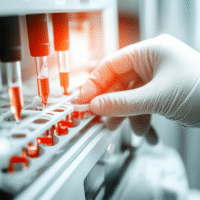Understanding the Trial Results
The clinical trial tested the use of blue light therapy in treating women with recurrent vulvovaginal candidiasis (RVVC), a common yeast infection. Here’s what we found:
What Worked?
- Blue light therapy showed promise as a non-drug option to help reduce the Candida Albicans fungus.
- Women who received blue light treatment reported improvements in their symptoms and overall quality of life.
What Didn’t Work?
- The study is still ongoing, and more data is needed to confirm how effective blue light therapy is compared to standard treatments.
How This Helps Patients and Clinics
This research suggests that blue light therapy could be a new treatment option for women suffering from RVVC. It offers a potential way to manage symptoms without relying solely on medications.
Real-World Opportunities
- Clinics can consider incorporating blue light therapy into their treatment options for RVVC.
- Doctors might use this therapy alongside traditional antifungal medications to enhance patient care.
Measurable Outcomes to Track
- Monitor the absence of Candida Albicans in patients after treatment.
- Assess improvements in quality of life, sleep quality, and levels of stress, anxiety, and depression.
AI Tools to Consider
Clinics could explore AI solutions that help track patient outcomes and manage treatment plans effectively, ensuring personalized care based on individual progress.
Step-by-Step Plan for Clinics
- Start with a small group of patients who have recurrent vulvovaginal candidiasis.
- Introduce blue light therapy as part of their treatment plan, alongside standard medications.
- Regularly monitor and document patient outcomes, focusing on symptom relief and quality of life.
- Evaluate the results and consider expanding the use of blue light therapy based on patient feedback and clinical outcomes.



























